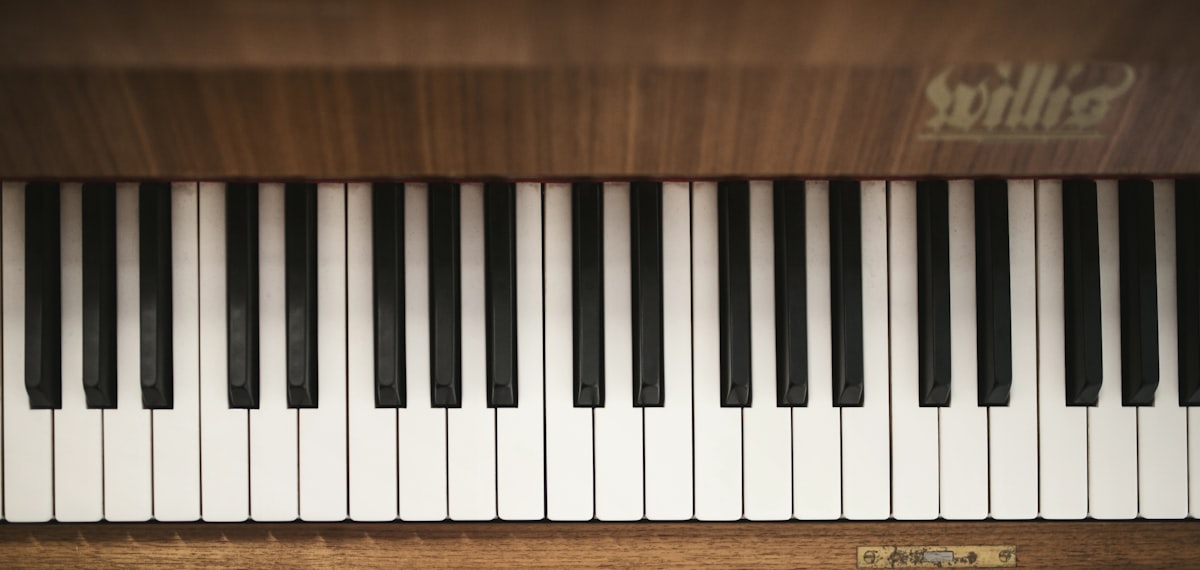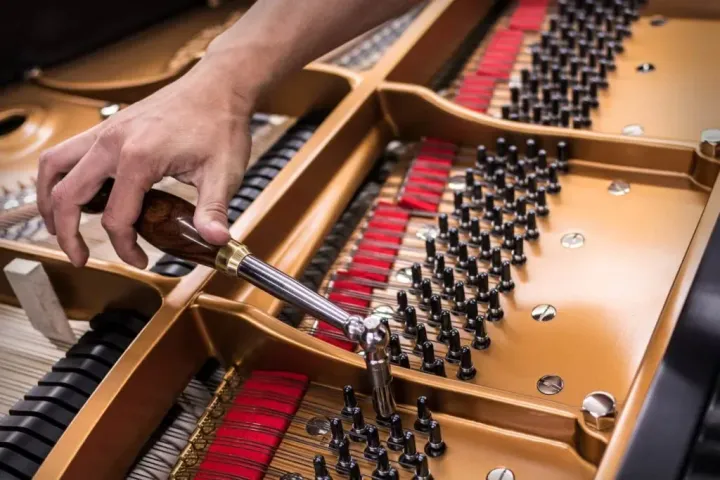Are Piano Keys Still Made of Ivory?

Pianos, like any other thing made by humans, have evolved over time.
The very first piano was invented by Bartolomeo Cristofori of Padua, Italy in 1700. It had wooden keys and its mechanism was similar to a harpsichord in that it had a plectrum that plucked a string. The difference though was that the pressure of the key on the plectrum determined the size of the sound.

This was the start of the modern-day piano.
There were many more inventions and modifications to the piano until it eventually evolved into the instrument we know today.
The White Keys
Ivory was the material used to make the white keys of the piano.
The reason why they used ivory was because it had the right amount of elasticity, which provided a good speed of attack and release. Also, ivory is more durable than any other material.
At the very beginning, the white keys were made of wood, but wood wasn’t durable. They then started using ivory, which was more durable but had a very high cost. Only the very rich could afford pianos with ivory keys.
Ivory keys had a buff finish and the woodwork was made of mahogany. This was the standard for pianos from the mid-18th century to the mid-19th century.
There was a lot of competition between piano makers, and they kept improving their product. The competition was based on the quality of sound and the durability of the mechanism and keys.
In 1821, Jean Henri Pape invented the double-escapement action. This innovation allowed the key to return to its position after being played. It was a big improvement because the player could play faster and release the keys sooner.
The innovation was patented by Pape and was used by many piano makers, including Steinway & Sons.
The Ivory Ban
The piano continued to evolve, but there was one big problem—the use of ivory for the white keys. As previously mentioned, ivory was the only material that had the right amount of elasticity and durability.
However, it was very expensive and there was a lot of competition among piano makers. This led to a decrease in the number of elephants, which were the main source of ivory.

The use of ivory in pianos caused the near extinction of elephants.
When did they stop using ivory for piano keys?
The United Nations Convention on International Trade in Endangered Species of Wild Fauna and Flora (CITES) banned the use of ivory in pianos in 1989.
The ban was a major problem for the piano industry. They needed to find an alternative material that had the same qualities as ivory.
How were ivory keys made?
Ivory keys were made by boiling the ivory in oil and then pressing it into the shape of a piano key. This resulted in a key that was strong, durable and had the right amount of elasticity.
Alternative to Ivory
The ban took effect in 1990.
At this point, Steinway & Sons had been using ivory for almost 150 years. They knew that they would have to find an alternative to ivory. They tried many materials, such as bakelite, plastic and wood, but none of them had the same qualities as ivory.
Finally, Yamaha developed a new material called “Ivorite”.
Ivorite is made by applying a thin layer of plastic to the keys. This layer is made of two different materials: a hard resin and a soft resin. The soft resin is applied to the front of the key and the hard resin is applied to the back. When the two resins are combined, they form a rigid plastic with a low coefficient of friction.
The result is a key that has the same qualities as ivory.
Ivorite is now the standard material used for the white keys of pianos.
TL;DR
Pianos have evolved over time and the keys have evolved with it. The use of ivory was a major problem because it was the only material that had the right qualities. However, it caused the near extinction of elephants and had to be banned.
So, instead of ivory, piano makers use ivorite today and have been using for years. Yamaha was one of the first piano makers to develop this new material called “Ivorite”. This material had the same qualities as ivory and is the standard for white keys.




Comments ()